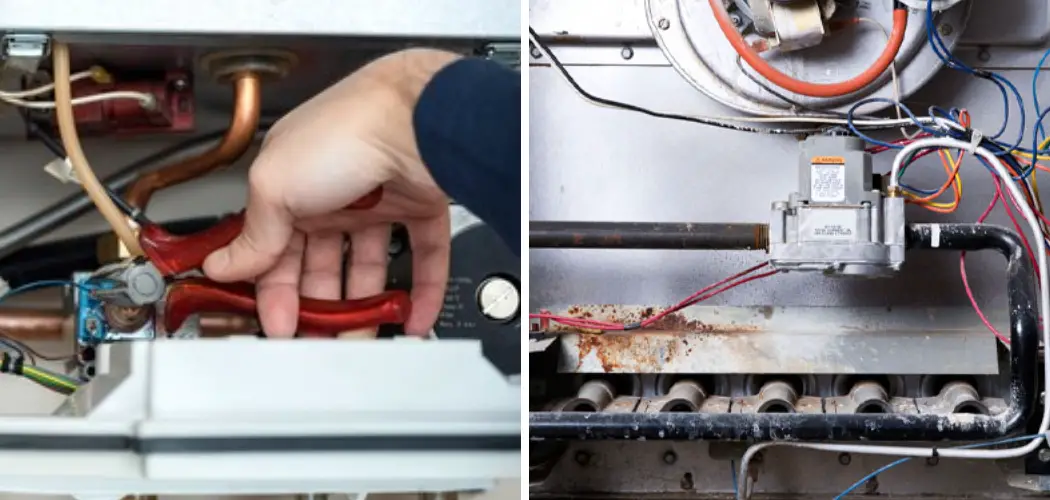As the chill of winter sets in, ensuring your gas furnace operates efficiently becomes paramount for a cozy and warm home. Occasionally, furnaces may encounter issues that necessitate a restart to restore proper functionality. Knowing how to restart a gas furnace can save you from discomfort and potential cold nights.
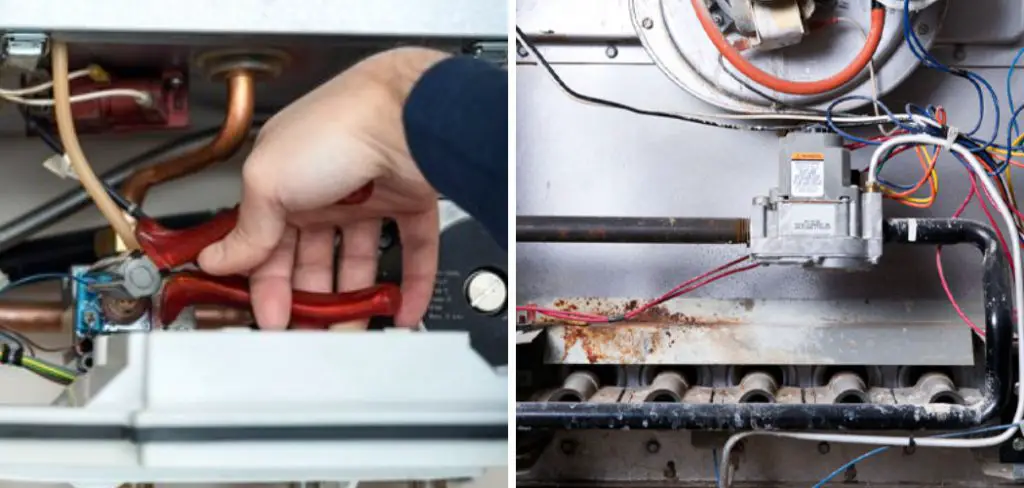
In this article, we will explore step-by-step methods on how to restart gas furnace. From troubleshooting common issues to understanding the furnace reset process, this guide aims to empower homeowners with the knowledge needed to navigate the nuances of gas furnace operation.
So, whether you’re facing a sudden shutdown or preparing for the winter season, mastering the art of restarting your gas furnace is a valuable skill that contributes to a comfortable and well-heated home.
Importance of Knowing to Restart a Gas Furnace
Understanding how to restart your gas furnace is not just about ensuring warmth and comfort in your home; it’s also a crucial safety measure. A furnace that isn’t operating correctly can pose several risks, from minor issues like uneven heating to major concerns such as gas leaks or carbon monoxide buildup.
By knowing how to effectively restart and troubleshoot your furnace, homeowners can address problems promptly before they escalate. Additionally, this knowledge can lead to significant savings on potentially costly emergency repair services. In essence, being familiar with the restart process of your gas furnace not only enhances your household’s safety and comfort but also protects your investment by extending the lifespan of your heating system.
Common Reasons for Needing to Restart a Gas Furnace
Several factors might necessitate the need to restart a gas furnace, ranging from simple issues to more complex problems. One of the most frequent causes is a power interruption, which can reset the system and require a manual restart to resume operation.
Additionally, thermostat malfunctions or incorrect settings can lead to a furnace not turning on when needed. Clogged filters are another common culprit, restricting airflow and causing the furnace to overheat and automatically shut off for safety.
A tripped circuit breaker or a blown fuse can also cut power to the furnace, necessitating a restart. Lastly, the furnace’s safety features may initiate a shutdown if they detect problems such as overheating or a gas leak, indicating that the furnace may need inspection and maintenance before it can be safely restarted. Understanding these common issues can help homeowners quickly identify and address the cause of a furnace shutdown.
Understanding Gas Furnace Operation
Before attempting to restart a gas furnace, it’s essential to have a basic understanding of how it operates. A gas furnace works by drawing in cold air from your home, cleaning it through an air filter, and then heating it with a gas burner. This heated air is then distributed throughout your home via the ductwork. The process is controlled by a thermostat, which signals the furnace to turn on or off based on the desired temperature settings.
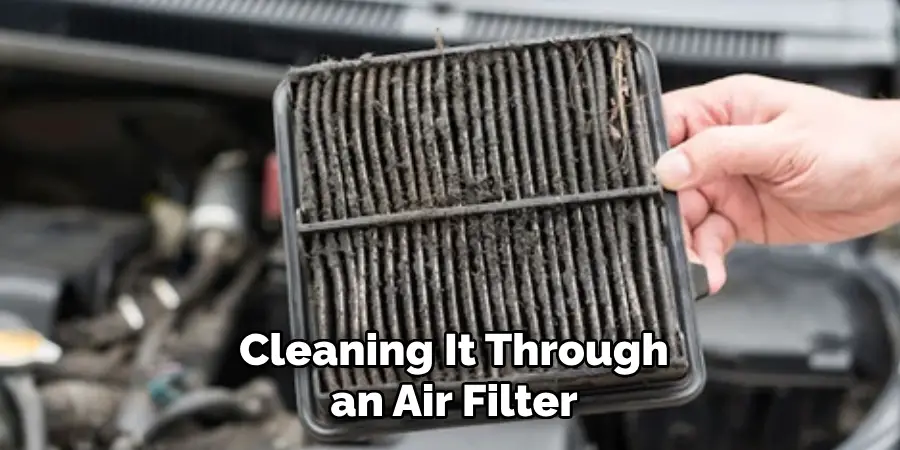
Key components of a gas furnace include the burner, heat exchanger, blower, and exhaust flues. Understanding these parts and their functions can aid in troubleshooting issues and effectively restarting your furnace. Furthermore, being familiar with the operation cycle of your gas furnace allows for a safer and more informed approach to maintenance and problem-solving.
Components of a Gas Furnace System
A gas furnace system comprises several critical components that function together to ensure efficient heating. Key components include:
- Thermostat: This is the control system that sets and maintains the desired temperature in your home. It signals the furnace to start or stop heating.
- Gas Valve: Regulates the flow of gas to the burner. It opens when the thermostat calls for heat, allowing natural gas into the combustion chamber.
- Burner: The burner is where the gas combines with air and is ignited, producing heat in the furnace.
- Heat Exchanger: This component heats the air from the home using the warmth produced by the burners. It ensures combustion gases are contained and safely vented out through the exhaust flue.
- Blower Motor: Once the air is heated, the blower motor pushes it through the ductwork to distribute warmth throughout the home.
- Air Filter: Located between the blower motor and the air intake, the filter cleans the air of dust, pollen, and other particles before it’s circulated back into the home.
- Exhaust Flue: Safely vents combustion gases, including carbon monoxide, outside the home to prevent harmful exposure to occupants.
Understanding each of these components and their roles in the heating process is crucial for troubleshooting and effectively maintaining a gas furnace system.
Issues Leading to Shutdown
When a gas furnace unexpectedly shuts down, the cause can often be traced back to a handful of issues that compromise its operation. One common issue is overheating, which may occur if the airflow through the furnace is restricted by a dirty air filter or blocked vents. This can trigger the furnace’s safety mechanisms, leading to an automatic shutdown to prevent damage to the system. Another prevalent problem is a malfunctioning ignition system.
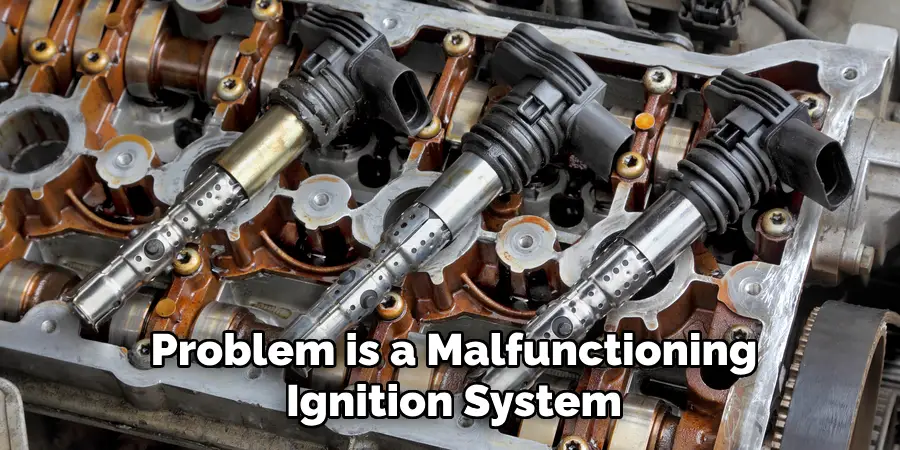
Modern furnaces typically use electronic ignition systems, which, if faulty, can prevent the furnace from starting. Additionally, issues with the gas supply, such as a closed gas valve or a leak in the gas line, can halt furnace operation. A furnace may also shut down if its internal components, like the thermostat, blower motor, or limit switch, are faulty or improperly calibrated.
Recognizing these potential issues is crucial for diagnosing why a furnace has ceased operation and determining the appropriate steps to restart it safely.
10 Methods How to Restart Gas Furnace
1. Check Thermostat Settings:
Start by verifying that your thermostat is set to “Heat” and the desired temperature. Ensure the thermostat’s batteries are functional, and consider raising the temperature setting to trigger the furnace to turn on. If this does not work, try resetting the thermostat by turning it off and on again. If the thermostat still does not activate the furnace, check for any error messages on the display and consult the manufacturer’s manual.
You may also want to inspect the wiring connections between your thermostat and furnace, as loose or damaged wires can prevent proper communication. Make sure all wires are properly connected and secure. If necessary, replace any damaged wires with new ones.
Another potential issue could be a dirty or malfunctioning thermostat sensor. This sensor is responsible for detecting the current temperature and relaying that information to the furnace. If it is dirty, it may not accurately read the temperature, causing issues with heating. In this case, try cleaning the sensor with a soft cloth or consult a professional for further assistance.
2. Inspect Power Supply:
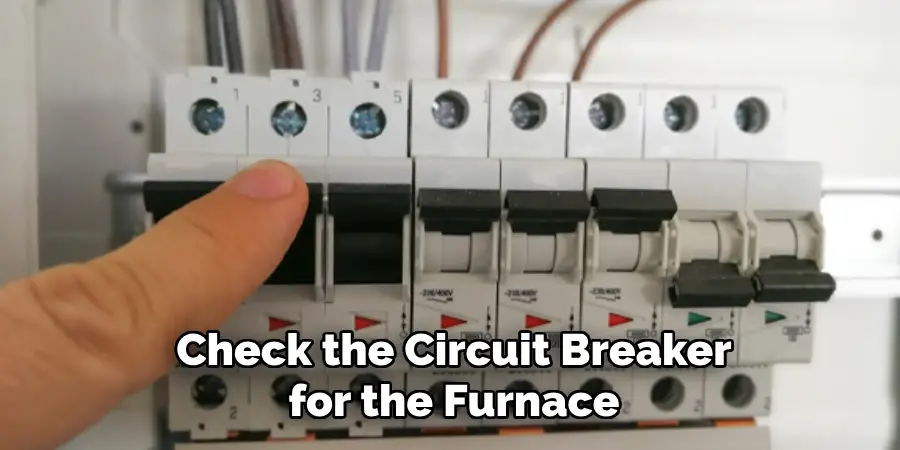
Confirm that the furnace is receiving power. Check the circuit breaker for the furnace in your electrical panel and reset it if necessary. Also, make sure the furnace switch (usually located on or near the unit) is in the “On” position. If the furnace is not receiving power, it may be due to an issue with the electrical supply or wiring.
To further inspect the power supply, you can also check the fuse box for any blown fuses that may be causing a loss of power to the furnace. If you find a blown fuse, replace it and try turning on the furnace again.
If all these steps have been taken and the furnace is still not receiving power, it may be a more serious issue requiring professional assistance. In this case, it’s best to contact a licensed technician to diagnose and fix the problem.
3. Examine Pilot Light:
If your gas furnace has a pilot light, check to see if it is lit. Follow the manufacturer’s instructions on relighting the pilot light if it’s out. Newer furnaces may have an electronic ignition system, eliminating the need for a pilot light. In such cases, check if the electronic ignition system is functioning properly and consult a professional for repairs if necessary.
If your gas furnace has been on for a while but no warm air is being produced, it could be due to a malfunctioning pilot light. If you’re not comfortable relighting the pilot light yourself, it’s best to call a professional technician to troubleshoot the issue and provide any necessary repairs.
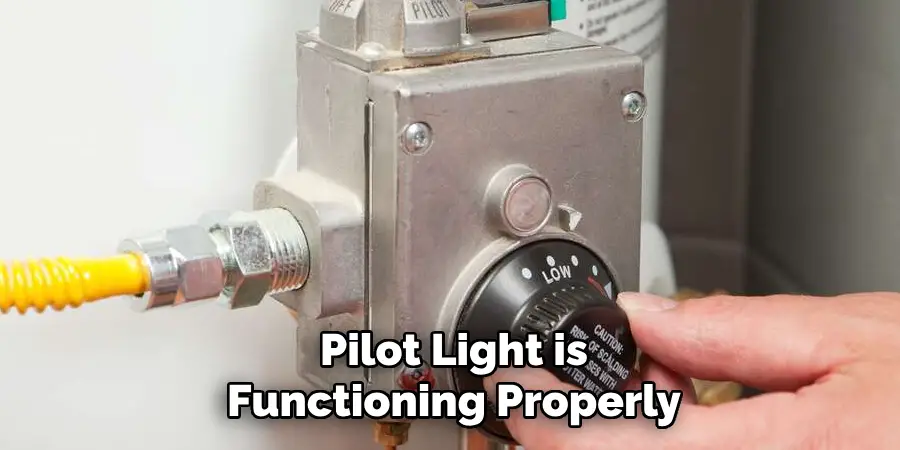
In addition to making sure the pilot light is functioning properly, it’s important to regularly clean and maintain your gas furnace. This can help prevent issues with the pilot light or other components of the furnace.
4. Replace or Clean Air Filter:
A clogged or dirty air filter can impede airflow and cause the furnace to shut down. Replace or clean the filter according to the manufacturer’s recommendations. This simple step can significantly improve the furnace’s efficiency.
Aside from improving efficiency, regularly replacing or cleaning the air filter also helps to improve indoor air quality. This is especially important for individuals with allergies or respiratory issues, as a dirty air filter can circulate dust and other airborne particles throughout the home. By keeping the air filter clean, you can reduce the amount of these irritants in your home and help create a healthier living environment.
Additionally, replacing or cleaning the air filter can also save you money in the long run. A clogged air filter makes the furnace work harder to push air through, resulting in higher energy bills. By regularly maintaining and replacing the air filter, you can help keep your utility costs down.
5. Inspect Gas Supply:
Ensure that the gas supply to the furnace is uninterrupted. Check the gas valve on the furnace—it should be in the “On” position. If the gas supply is off, contact your gas provider or a qualified technician to address the issue.
In addition to checking the gas valve on your furnace, you should also inspect all other components of your gas supply system. This includes any pipes or connections that may be present in your home. Look for signs of damage or leaks, such as rusting or hissing sounds.
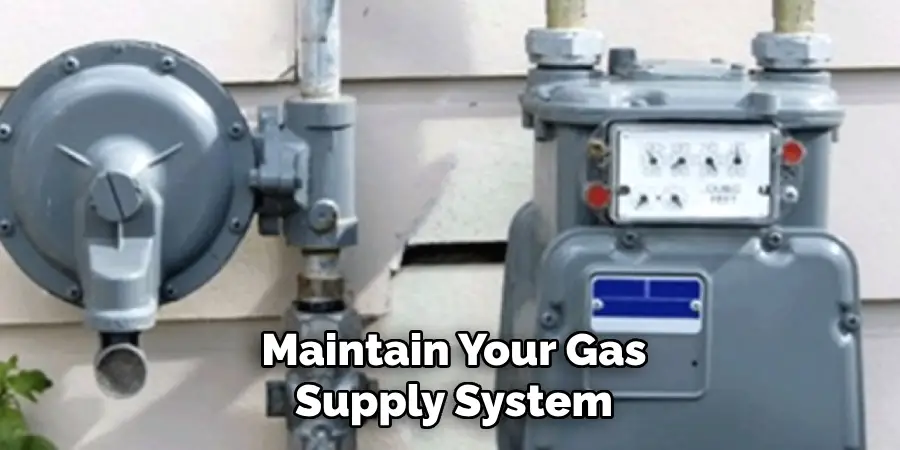
It is important to regularly check and maintain your gas supply system to prevent potential hazards and ensure proper functioning of your furnace. Make sure to schedule routine inspections with a qualified technician to identify any potential issues and address them before they become major problems.
6. Reset the Furnace:
Most modern furnaces have a reset button. Locate this button on the furnace’s control panel and press it. Allow the furnace a few minutes to restart. If it doesn’t restart, avoid repeated attempts, as this may cause further issues. If the furnace still doesn’t start, check for other possible causes such as a tripped circuit breaker or a blown fuse. If these are not the issue, then it may be time to call a professional for assistance.
After resetting your furnace and finding that it still doesn’t work, there are some other steps you can take to troubleshoot the problem. First, check to see if there is power coming to the furnace. Make sure that all switches and breakers are in their correct position. If everything appears to be in order, then the issue may lie within the thermostat. Check to see if the thermostat is set to the proper temperature and mode. If it is not, adjust accordingly and attempt to restart your furnace once again.
7. Inspect Venting System:
Ensure that the venting system is free of obstructions, such as debris or ice accumulation. A clear venting system is essential for proper combustion and exhaust. If any blockages are found, they should be removed immediately to prevent potential hazards.
Additionally, make sure to inspect the vent pipes for any damage or corrosion that could lead to a leak. However, this is not a task that should be attempted by inexperienced individuals and should only be done by a qualified technician.
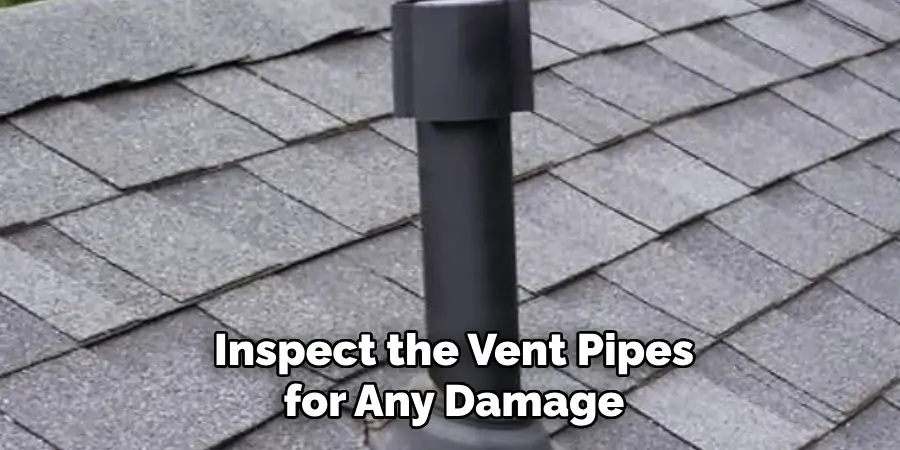
It is crucial to regularly check the venting system to ensure it is functioning correctly. Neglecting this important step can result in carbon monoxide build-up, which can lead to carbon monoxide poisoning. Carbon monoxide is an odorless and colorless gas that is extremely dangerous and can be fatal.
8. Check for Error Codes:
Modern furnaces often have diagnostic features that display error codes. Refer to your furnace’s manual to interpret these codes, and address any issues accordingly. Error codes can provide valuable insights into the problem.
Error codes are used by modern furnaces to indicate any issues that may be occurring with the unit. These codes are displayed on the furnace’s diagnostic feature which helps you identify and troubleshoot problems more efficiently. The error codes can provide valuable insights into what could be causing the issue, making it easier for homeowners to diagnose and fix problems without having to call a professional.
There are numerous error codes that can appear on a furnace, and each one is associated with a specific issue. For example, an E1 code might indicate an ignition failure, while an E2 code could mean a high limit switch has tripped. By understanding what each error code means, homeowners can quickly determine the cause of the problem and take appropriate action.
9. Inspect Pressure Switch:
The pressure switch ensures that the combustion process is functioning correctly. Check for any blockages in the tubing connected to the pressure switch and clean or replace it as needed. If the pressure switch is faulty, it must be replaced.
Additional content: It is important to regularly inspect and test the pressure switch to ensure proper functioning of your heating system. This can help prevent potential issues with the combustion process and avoid costly repairs in the future.
To inspect the pressure switch, begin by turning off power to your heating system. Locate the pressure switch, which is typically a small device connected to the tubing near the combustion chamber. Check for any obvious signs of damage or wear and tear, such as cracks or corrosion.
10. Consult Professional Help:
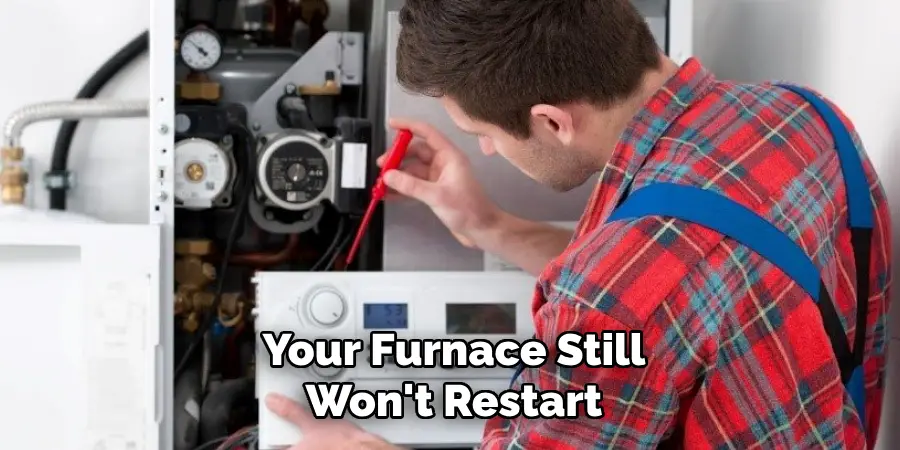
If you’ve exhausted the troubleshooting steps and your furnace still won’t restart, it’s time to seek professional assistance. Contact a licensed HVAC technician to diagnose and address more complex issues with the furnace. While this may come at an additional cost, it’s worth the peace of mind knowing that your furnace is in good hands.
In addition to helping you with troubleshooting, a professional HVAC technician can also provide regular maintenance for your furnace. This includes cleaning and replacing filters, inspecting and repairing any damaged components, and ensuring proper ventilation. Regular maintenance can help prevent future issues with your furnace and improve its overall efficiency.
Conclusion
In conclusion, knowing how to restart a gas furnace is an essential skill for homeowners to ensure uninterrupted heating during colder months. By following systematic troubleshooting steps, including checking thermostat settings, verifying gas supply, and resetting the furnace, individuals can often resolve common issues themselves.
However, safety precautions must always take precedence, with careful attention to gas and electrical components. Regular maintenance and professional inspections also play a crucial role in preventing breakdowns and ensuring the furnace operates efficiently.
Homeowners should prioritize safety and familiarity with their furnace systems, promptly addressing any concerns and seeking professional assistance when necessary. Thanks for reading, and we hope this has given you some inspiration on how to restart gas furnace!

